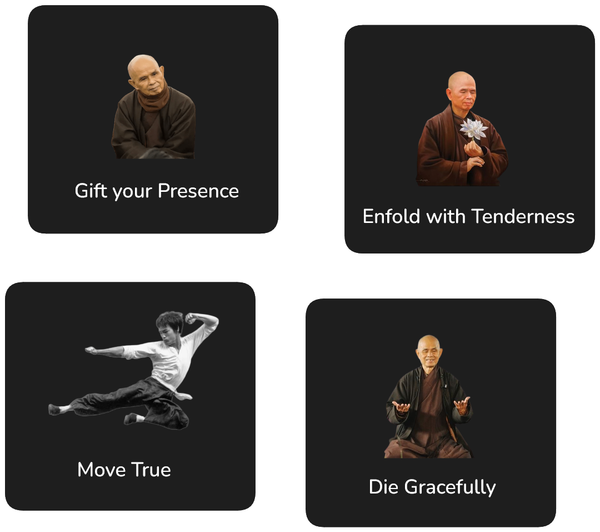Practice: Body Mindfulness

With all the distractions in our life, we often forget what is most fundamental to our existence: our own bodies. We should take time to be mindful of how our body feels. Do we have pain somewhere? Do we feel relaxed or tense?
This is the first post of a series in which I will discuss various practices which may help in reaching a happier, more satisfied and more enlightened state of mind. The practice I describe here may help us to become more mindful of our bodies, the temple from which we must utter all our prayers.
These are the steps to follow:
- Breathe in until your lungs are completely filled with air, then slowly exhale until all air is gone. Repeat for three times, then breathe naturally, simply observing your breath.
- Become mindful of every part of your body starting with your left arm and moving counter-clockwise first to your left leg, then right leg, right arm, then head and finally core by going through the following steps for each body part:
- Become aware of how that part of your body feels. Are you relaxed or tense? Is there any pain?
- Focus on the body part and make it feel heavier. Don't press the part downward. Leave it as relaxed as possible, just let your thoughts flow towards it and feel how it slowly becomes heavier. Repeat the words 'My right arm is heavy', replacing right arm with the body part you are currently focusing on.
- Next direct your thoughts to make the body part feel warmer and even more relaxed. Repeat the words 'My right arm is warm'. You may speak this softly or just verbalise it in your mind.
- Once you feel the body part being relaxed, warm and heavy, move on to the next part.
If your mind wanders during this practice to other issues, gently redirect your thoughts to your body and the steps of this practice.
This simple practice is grounded in a number of foundations. Firstly, controlling breathing is a known way to use our body to calm our mind. Just being mindful of our breath, even without trying to breathe slowly and regularly, will help us to become more relaxed, happy and aware.
Focusing on various body parts and channelling concentration on making them feel warm and heavy is based on the ideas of Autogenic training which has been proven to treat various disorders. This kind of approach is also know as body scan meditation and is popular as part of the Vipassana tradition. Generally mindfulness meditation has been shown to provide a number of health and mind benefits.
Resources
A Guide to Psychology and Its Practice - Autogenics Training
Featured Image: Vitruvian Man by Leonardo da Vinci





